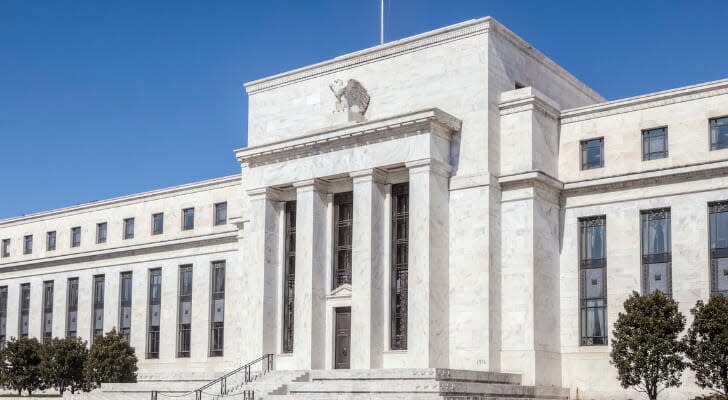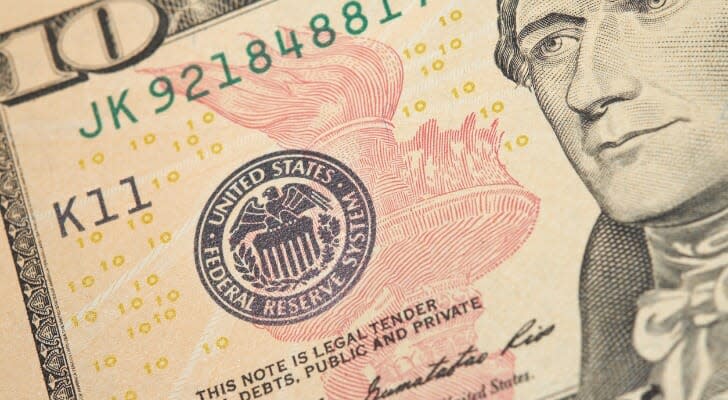What Is Quantitative Tightening?

In the past two years, investors have taken an unusual interest in the Federal Reserve Bank. That’s mostly due to a Fed policy known as ‘quantitative tightening’, or QT. Effectively, QT was the Fed’s attempt to reduce its holdings after it bought huge amounts of debt during the 2008 Great Recession. While some details will interest only economists, QT may have implications for financial markets and regular investors. It’s useful to explore the backstory, but a financial advisor can be helpful if you’re concerned about how Fed activity can impact your investments,.
What is Quantitative Tightening?
To understand quantitative tightening, it’s helpful to define another term, which is quantitative easing. To do that, we need to go back to the bad days of 2008.
When the Great Recession hit, the Fed slashed interest rates to stimulate the economy. But it was evident that wasn’t nearly enough to stave off crisis. So the Fed provided another jolt of stimulus by buying Treasury bonds, mortgage-backed securities and other assets in huge volume. This combination of slashing interests rates massive government spending was qualitative easing, or QE, and fortunately it worked. Banks had more cash and could continue to lend, and more lending led to more spending. Slowly, the economy recovered.
But in the meantime, QE exploded the Fed’s balance sheet, which is a tally of the bank’s liabilities and assets. Prior to the crisis, the balance sheet totaled about $925 billion. With all the purchased debt, which the Fed categorized as assets, the balance sheet ballooned to $4.5 trillion by 2017. Years past the financial crisis and with a strong economy, the Fed decided to shrink its balance sheet by shedding some of its accumulated assets, effectively reversing QE.
That reversal is quantitative tightening. QE had poured money into the economy, and through quantitative tightening, the Fed planned to take some of that money out again. First it raised interest rates, which it had plummeted to zero during the financial crisis. Then, it began retiring some of the debt it held by paying off maturing bonds. Instead of replacing these bonds with new debt purchases, the Fed stood pat and let its stockpile shrink. This effectively reduced the quantity of money under bank control, thus quantitative tightening.
Did Qualitative Tightening Officially End?
There was no official beginning or end to quantitative tightening. The Fed began to ‘normalize’ its balance sheet by raising interest rates in December 2015, the first hike in nearly a decade. In October 2017, it began to reduce its hoard of bonds by as much as $50 billion per month. But after four 2018 interest rate cuts and some stock market downturns, many observers worried the Fed aggressive normalization was too much of a shock to the economy.
In response, the Fed ended the interest rate hikes and slowed down on debt retirement. By March 2019, the cap on reductions reduced from $30 billion a month to $15 billion. By October 2019, the Fed announced it would once again start expanding its balance sheet by buying up to $60 billion in Treasury bills a month.
However, the Fed insisted this was not another round of quantitative easing. Some market observers reacted to that announcement with skepticism. But whether this was or wasn’t a new round of QE, the Fed’s action effectively stopped quantitative tightening.
How Quantitative Tightening Impacts Markets

Many investors worry that quantitative tightening would negatively impact markets. During the past decade, returns have shown a relatively high correlation with the Fed’s purchases. Conversely, the Fed’s selloff of assets was a contributing factor to the market dip in late 2018, which left the S&P 500 about 20% below its top price.
Quantitative tightening definitely made some investors nervous. That said, there are a few things to consider if the Fed shrinks the balance sheet in the future. First, it’s unlikely the balance sheet will contract to its pre-2008 level. The Fed hasn’t indicated where a ‘happy medium’ might be, but the balance sheet remained well about the pre-2008 figures when expansion began again in October 2019.
Additionally, it’s unlikely that quantitative tightening will reverse quantitative easing’s impact on long-term interest rates. In part, the Fed purchased long-term bonds and mortgage-backed securities to move money into other areas, like corporate bonds, and lower borrowing costs. Also, the Fed hoped this activity would encourage the productive use of capital. According to the Fed’s research, the use of quantitative easing reduced yields on 10-year treasury bonds by 50, to 100 basis points (bps).
While quantitative tightening may have reversed some of this impact, experts believe it will not undo long-term interest rates by 100 bps. Ultimately, it comes down to the comparative impact of the expansion and contraction of the balance sheet. In October 2019, the contraction was not nearly sufficient to reverse the expansion.
Other Considerations of Quantitative Tightening
Many investors worry that quantitative tightening will have a big impact on inflation and liquidity. This is because changes in inflation and liquidity may occur when there is a discrepancy concerning supply and demand. During the financial crisis, the Fed increased the money supply since the economic system desperately needed liquidity. A decade and strong recovery later, there’s less liquidly preference. In response, the Fed has decreased cash reserves. In a strong market, this should have no real impact on liquidity and inflation.
The Takeaway

Quantitative tightening is a monetary policy that increased interest rates and reduced the money supply in circulation by retiring some of the Fed’s debt holdings. After qualitative easing expanded the money supply for several years to bring the economy back on track, the Fed used qualitative tightening as a means to normalize its balance sheet.
While quantitative tightening did not completely reverse quantitative easing, it did shrink the Fed’s balance sheet. This strategy left many investors uneasy about future returns and interest rates. That said, balance sheet normalization did not prove to be as disruptive as many investors feared.
Tips for Investors
The Fed’s monetary policy quickly becomes complex, but it’s still useful for investors to keep an eye on the bank’s actions. Since interest rate changes can have direct impact on major purchases and investment plans, understanding the Fed’s reasoning for these decisions can be helpful.
Financial advisors can help their clients cut through the noise and translate technical analysis of market observers into plain language. Finding the right financial advisor that fits your needs doesn’t have to be hard. SmartAsset’s free tool matches you with financial advisors in your area in five minutes. If you’re ready to be matched with local advisors that will help you achieve your financial goals, get started now.
Photo credit: ©iStock.com/drnadig, ©iStock.com/claffra, ©iStock.com/Duncan_Andison
The post What Is Quantitative Tightening? appeared first on SmartAsset Blog.
